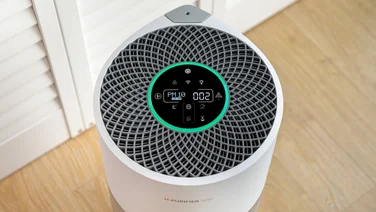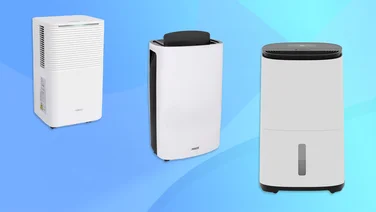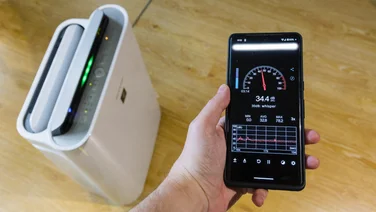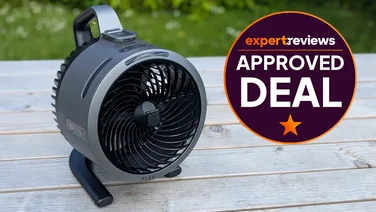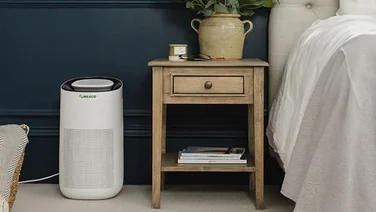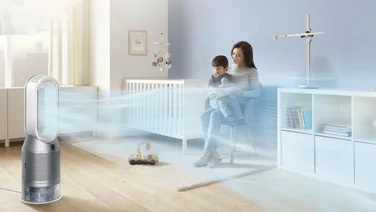To help us provide you with free impartial advice, we may earn a commission if you buy through links on our site. Learn more
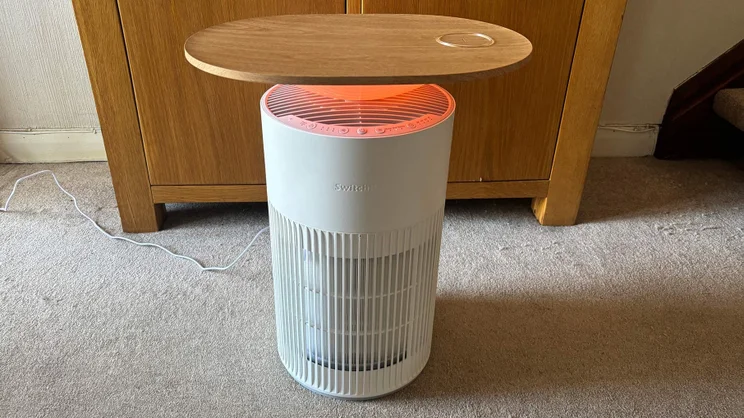
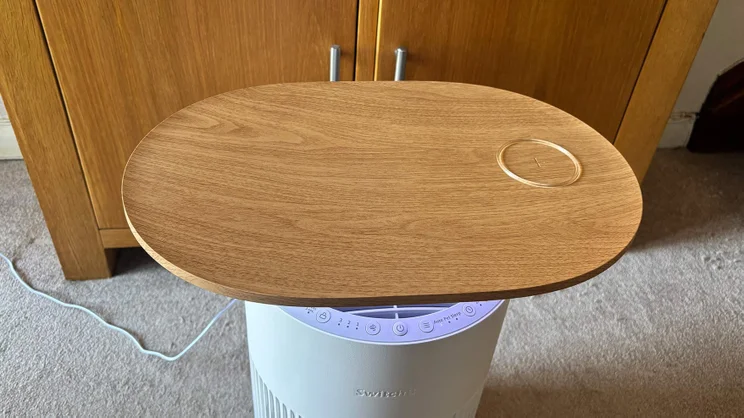
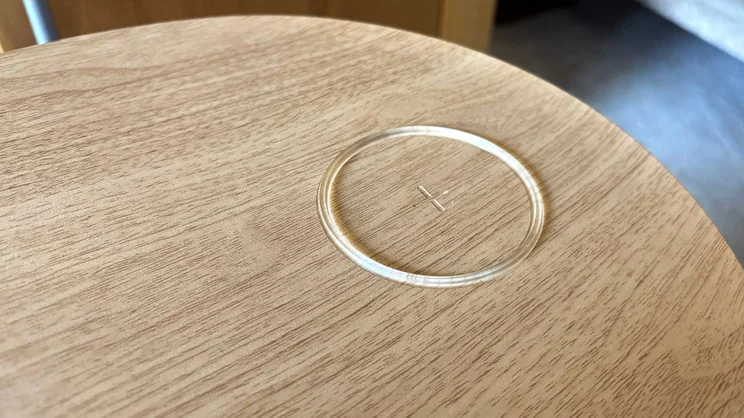
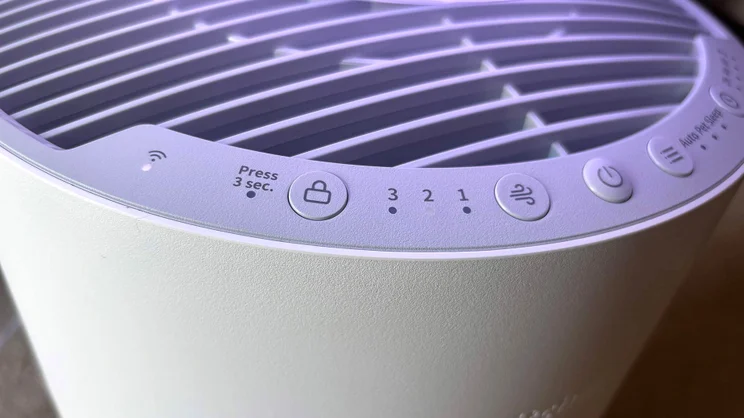
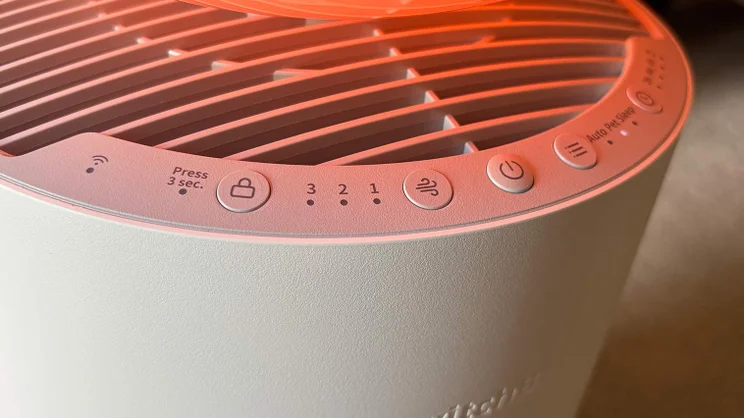
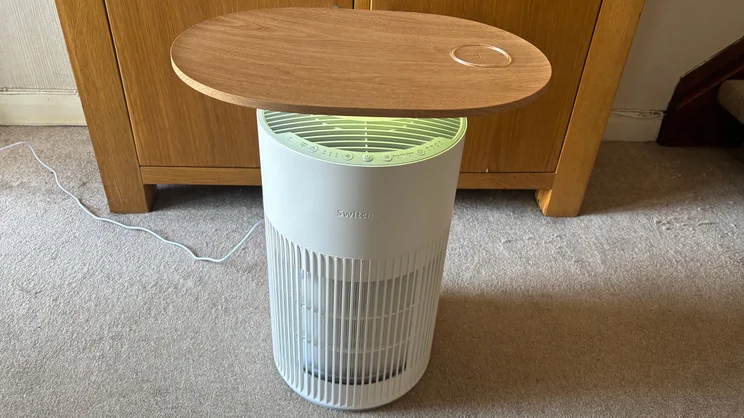
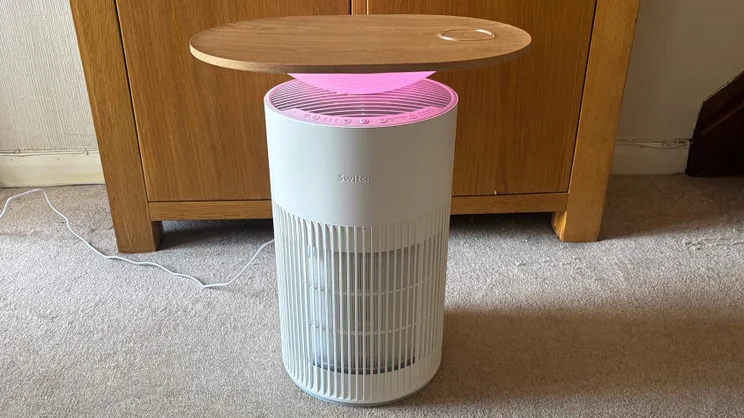
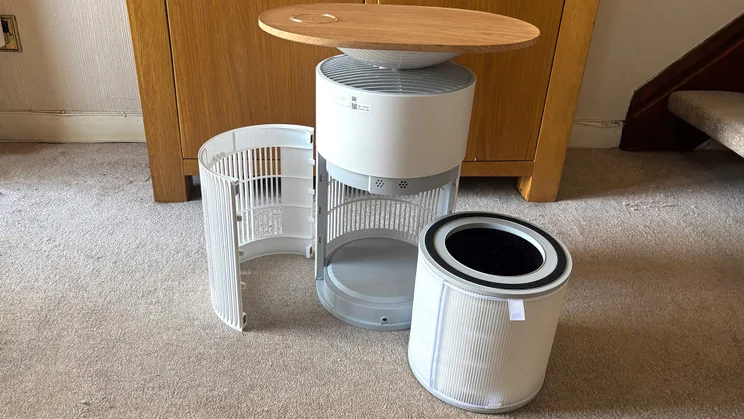
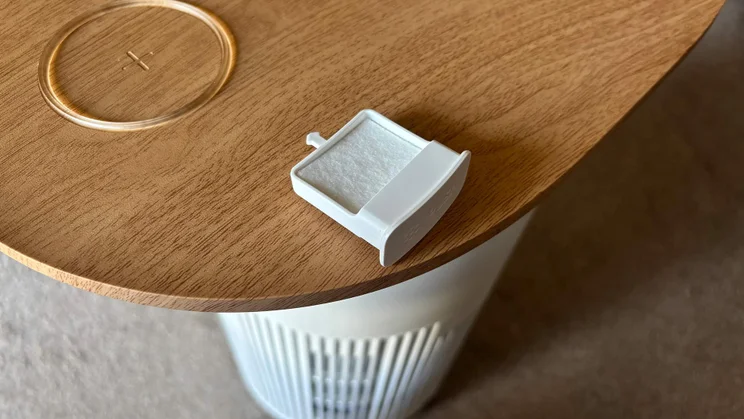

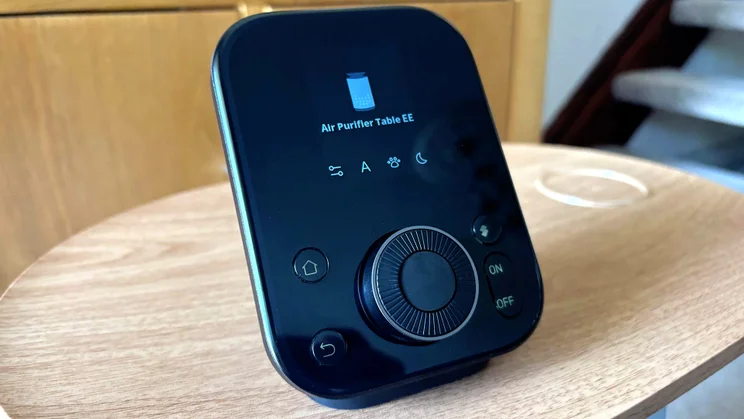
- Easy to use, with clearly labelled buttons
- Matter integration mates with Alexa, Google and other smart home systems
- Tabletop is the ideal height
- Noisy, especially at higher fan speeds
- Control buttons are awkwardly placed in relation to the tabletop
- No PM10 or VOC sensors
Unlike many of its contemporaries, the SwitchBot Air Purifier isn’t one to simply sit in the corner, performing a single action – namely to remove impurities from the air. It also has a few simple but useful features that will help if space is at a premium, or you’re looking for something that disguises itself a little.
As well as all the usual features you’d expect from an air purifier, the SwitchBot Air Purifier Table also has ambient lighting beneath an oak-effect tabletop. It makes the big, white cylinder underneath that little bit more discreet, and provides a handy spot to charge your phone wirelessly and rest a Kindle or an old-school photoframe, if that’s your thing.
But whether it’s right for you among the echelons of the best air purifiers will come down to something else: are you happy to trade its excellent Matter integration for the lack of PM10 or volatile organic compound sensors? Let’s find out.
What do you get for the money?
The SwitchBot Air Purifier is available with or without the tabletop attachment; we’ve tested it with one because we were interested to see whether it could really offer dual functionality. As tested, it costs £300. That’s a hefty £60 more than the regular version sans table, although it’s worth remembering you could easily pay that for a small side table from Ikea.











Power it on, and you’ll find an air purifier with a punchy clean air delivery rate (CADR) of 400m³/h, which can clean rooms up to 33.4m². SwitchBot says it can clean an area of 20m² in just over seven minutes and 167m² in an hour. While the HEPA filter can capture particles with a diameter of 0.1-0.3 micrometres – and the activated carbon filter targets ammonia and hydrogen sulphide amongst others – there’s just one air quality sensor, for PM2.5. So, while it should filter quite a lot, you won’t necessarily know how much and when.
The three-part filter – which is wrapped in a removable pre-filter – is claimed to filter 99.97% of PM2.5, bacteria and dust, plus 93.45% of pet hair. SwitchBot recommends the pre-filter is cleaned every 2-4 weeks, with the whole unit needing to be swapped annually, depending on how much the purifier is used. Replacements cost £45.
In a world where hidden touchscreen buttons are ubiquitous, it’s great to see a series of clearly labelled, physical buttons for turning the unit on and off as well as setting the fan speed and modes, the timer, plus a child lock. There are also a series of white lights, which clearly show what you’ve selected.
Clean air is emitted through the top of the SwitchBot, but the flow is deflected off the curved light unit underneath the tabletop by around 45 degrees. This ambient night light illuminates in ten different colours, which are configurable via the app. There’s also a small tray for essential oils, although SwitchBot says using this will reduce the unit’s effectiveness.
The table has a convincing oak effect and is easily wide enough for the average laptop. The wireless charging pad is raised, meaning phones with a raised camera, such as the iPhone 16, will sit satisfyingly flat. While SwitchBot doesn’t warn against placing hot drinks on the table, it’s probably best avoided unless you pop a coaster on there first; it’s hard to know how tough that melamine-like surface will be.











The SwitchBot also features Matter integration, allowing it to be controlled via the likes of Alexa, Google Assistant or Siri. SwitchBot’s smartphone app allows PM2.5 levels to be monitored and various functionality to be controlled, or it can be operated via the £130 SwitchBot Hub 3, which can control other SwitchBot tech, as well as third-party Matter devices such as Hue and Ikea lights.
How well does it work?
The SwitchBot air purifier takes a small amount of assembly, which involves connecting power to the table and fixing it to the main unit using two screws. SwitchBot includes a screwdriver and four magnetised screws – so you’ve got two spares – which is perhaps an acknowledgement that the process is a little awkward.
More time-consuming is installing the 583MB SwitchBot app, and pinging off the back of the purifier to install the filter is far easier. Replacing this filter could barely be more straightforward too. You simply remove the back half of the lower unit, and the filter slides in and out snugly, although you’ll want to take care to ensure the fabric tags are visible to make it easier to remove.











I like that the physical buttons operate with a satisfying click, and that they’re clearly labelled. The crisp white lights that indicate which fan speed, operating mode or timer setting has been selected are easy to read, even when the integral light is on. It’s very easy to use, and all very intuitive. It’s a shame that the table, which is handy for so many reasons, gets in the way here. To see the buttons, you need to stoop down to look underneath the table’s overhang.
To test the filtration ability of the SwitchBot air purifier, I expelled a lengthy spray of deodorant in a small room and monitored µg/m³ levels (micrograms per cubic metre) with a dedicated air quality meter. The purifier reduced a level of 378µg/m³ to a safer 25µg/m³ level in 139 seconds, which is pretty effective. It reduced levels of contaminants quickly initially, registering big drops, before beginning to tail off – which is quite common.
The SwitchBot expels clean air in 360 degrees, although on its most powerful setting its output measured just 0.9m/s at a distance of one metre, and even then it huffed its air in a relatively narrow band. It’s quite loud, too: its 46dB on its lowest regular setting is noisier than the Blueair Signature on a medium speed. Night mode is a barely-louder-than-background 33dB.











In our power consumption tests, the SwitchBot swallowed 7.6W on its lowest setting, which is appreciably more than most other air purifiers we’ve tested, and 38W is among the more power-hungry units. It’s definitely a candidate for a dual-rate electricity tariff if you’re a heavy user in areas where noise isn’t an issue at night, such as a living room.
Hooking it up to the SwitchBot Hub 3 was easy, and I was able to control the air purifier’s basic functions with ease from the comfort of my armchair. Two default displays show the time or the temperature and humidity, which is a nice touch. As ever with hubs like this, the more compatible devices you have, the more useful it is.











With Matter integration, I found it easy to set an Alexa Skill to operate the SwitchBot through my Amazon Echo Dot, although syncing it with Apple Home proved tricky, and ultimately I gave up. Still, all of the functionality can be controlled via the SwitchBot app, which is easy to use, if lacking the friendly look and feel of similar apps from Blueair and Levoit.
The bigger bugbear is that the app only tracks PM2.5 contaminants, which is a shame given that similarly priced competitors track a wider range of particulates.
What could be improved?
While the SwitchBot Air Purifier Table is effectively the regular air purifier with an oak effect top on it, it does bring some shortcomings. As I mentioned above, placement of the controls in relation to the tabletop is awkward. I’d like to see these buttons – or at least an auxiliary panel – positioned on the table to make the buttons easier to see and use.
And at this price, sensors which detect more than just PM2.5 would be particularly welcome.
Should I buy this SwitchBot Air Purifier Table?
If you’re looking for a punchy and effective air purifier that replaces the need for a side table, or if you’re often fumbling around for a phone charger (and who isn’t), then the SwitchBot is for you.











Couple that with Matter integration, and its seamlessly plugging into the wider SwitchBot ecosystem, and it could be a mighty fine companion.
However, it’s far from the quietest on test, and that power consumption may raise a few eyebrows. But this may not be an issue if you’re on a dual-rate tariff and it will primarily be operating in a living room where, with the door shut, it won’t disturb sleepers. That said, if you’re after a particularly quiet air purifier or one that won’t guzzle so much power, consider the Blueair Blue Max 3250i or Blue Pure 511 respectively.

